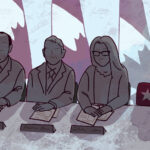As I stroll through Mooney’s Bay Park on a crisp autumn afternoon, there’s a new addition catching my eye beside the playground – a bright red metal locker emblazoned with the words “Free Sports Equipment.” Inside, basketballs, soccer balls, and frisbees wait to be borrowed by anyone looking to get active.
This scene is repeating across Ottawa as the city rolls out an ambitious expansion of its popular “Free Sports Equipment in City Parks” program. What began as a modest pilot at three locations in 2022 has now grown to include 50 parks citywide, fundamentally changing how residents access recreational opportunities.
“We’ve seen tremendous success with our initial locations,” says Riley Thompson, Program Coordinator with Ottawa Recreation, Cultural and Facility Services. “The community response has been overwhelmingly positive, especially from families who might not have the budget to purchase multiple types of sports equipment.”
The program operates on a simple premise: residents can borrow equipment free of charge, use it in the park, and return it when finished. No registration, identification, or fees required. The city-maintained lockers contain a seasonal rotation of items including basketballs, soccer balls, footballs, and various other sporting equipment.
For Centretown resident Maria Diaz, who I meet while she watches her children kick around a borrowed soccer ball, the program has been revolutionary. “We live in an apartment without much storage space. Having access to different equipment right where we play means my kids can try new activities without us investing in gear they might lose interest in,” she explains.
The expansion comes after city data showed over 9,000 equipment loans during the 2023 season at just the original three locations. According to information published on the City of Ottawa website, the most borrowed items were basketballs (38%), soccer balls (29%), and frisbees (14%).
City Councillor Shawn Menard has been a vocal supporter since the beginning. “This program embodies what public service should be – removing barriers and creating opportunities for everyone,” he tells me during a phone interview. “Physical activity shouldn’t be limited by economic status.”
The program addresses multiple community needs simultaneously. Beyond providing equitable access to recreational equipment, it encourages spontaneous play and helps families try new activities without financial commitment.
The initiative hasn’t been without challenges. Initial concerns about theft and vandalism proved largely unfounded, with loss rates under 5% at pilot locations. The city has implemented weather-resistant lockers with simple mechanical locks rather than digital systems requiring maintenance.
“We deliberately kept the system low-tech and user-friendly,” explains Thompson. “The goal was sustainability – both environmentally and operationally.”
Funding for the expansion came through a combination of the city’s recreation budget and a $250,000 grant from the Ontario Trillium Foundation, according to city documents. Each equipment station costs approximately $7,500 to install and stock initially, with annual maintenance budgeted at around $1,200 per location.
Ottawa Public Health has endorsed the program as part of its strategy to combat increasing childhood obesity rates. Dr. Vera Etches, Ottawa’s Medical Officer of Health, noted in a recent statement that “creating opportunities for unstructured play and physical activity is crucial for developing healthy lifelong habits.”
The locations weren’t chosen randomly. The city analyzed factors including population density, income levels, and existing recreational infrastructure to identify parks where equipment access would have the greatest impact.
Walking through Bayshore Park in the west end, I notice a diverse group of teenagers sharing a borrowed basketball on the community court. One of them, 16-year-old Jamal, tells me, “Before this, we’d have to coordinate who would bring a ball. Now we can just show up and play.”
The program has also created unexpected community connections. At McNabb Park, regular users established an unofficial “equipment guardian” system where regulars help ensure items get returned properly. These organic community responses highlight how seemingly simple initiatives can strengthen neighborhood bonds.
Looking ahead, the city plans to track usage patterns to optimize equipment offerings and potentially expand to include seasonal items like snow shovels for community rinks in winter months.
For many Ottawa families facing tightening budgets, the program provides welcome relief. “With the cost of everything going up, being able to come to the park and have things to play with without spending more money means a lot,” says Ahmed Farooq, a father of three I meet at Pushman Park.
As I finish my tour of several equipment locations across the city, one thing becomes clear: sometimes the simplest ideas create the most meaningful impact. In removing financial barriers to recreation, Ottawa has created something more valuable than just free sports equipment – it’s created more accessible pathways to community connection, physical health, and spontaneous joy.
For location details and more information about the Free Sports Equipment program, residents can visit the City of Ottawa’s recreation webpage or call 3-1-1.







